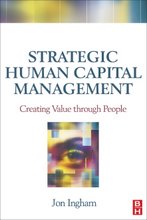I’m at Symposium’s Engagement conference today. First up has been Amy Armstrong from Ashridge sharing their work on team level engagement for Engage for Success, sponsored by Oracle. They researched 28 work teams across 7 sectors and involved nearly 200 people, comparing 2 engaged teams vs 2 similarly sized ones from the same function facing challenges.
The aim has been to lift the lid on teams which have become more important as more work is now done collaboratively, and more organisations us team level targets and rewards etc. But most of the work on engagement looks at individual level, or with the organisation, eg around integrity etc. There is very little done on team engagement.
Often teams are seen as engaged or not (do surveys actually measure the right thing?).
But the research suggests engagement is not binary - there is something else going on. 2 other states - complacent or contentment, and pseudo-engagement = an illusion presented to the organisation.
These categories were identified by looking at two dimensions of behaviours and climate:
Complacent (21%)
Positive but taking it easy, not pushing things
OK in some types of work but not for innovation etc
Disengaged (32%)
Lack of trust
Unsafe to speak up
Tendency to blame the system rather than take accountability
Pseudo-engaged (21%)
Individualistic approaches
Saying and doing the right things to present illusion of engagement
Self promotional behaviour leaned to upwards perpetuation of ingratiation
Engaged (25%)
We, us, together
Solution focused
Using conflict as source of creating and insight
Team leader was often nearly invisible with leadership distributed between team members.
Often have people moving between the teams fairly quickly
Other insights included:
Annual engagement surveys aren’t enough
In engaged and disengaged teams it is the line manager that makes the difference
Many of the most engaged teams were virtual because of increased autonomy and trust
For me, these results were interesting but don’t fully get at what happens in a team. They describe average states across team members, and are not really about any emergent state within the team. Eg Amy gave an example of a manager who asked people to share their level of engagement on a whiteboard - good, but not as useful for a real team as sharing this in a stand up meeting or something
Note that the research focused on functions so these are not real horizontal / cross functional (project, agile, etc) teams. I think if you looked at these you would find something more interesting, which relates to the team as a whole.
In fact my own session this afternoon suggests that engagement differs across each type of organisational group / network, ie functions, horizontal teams, communities and networks.
See my slides here.
And for more information, see The Social Organization.
The aim has been to lift the lid on teams which have become more important as more work is now done collaboratively, and more organisations us team level targets and rewards etc. But most of the work on engagement looks at individual level, or with the organisation, eg around integrity etc. There is very little done on team engagement.
Often teams are seen as engaged or not (do surveys actually measure the right thing?).
But the research suggests engagement is not binary - there is something else going on. 2 other states - complacent or contentment, and pseudo-engagement = an illusion presented to the organisation.
These categories were identified by looking at two dimensions of behaviours and climate:
Complacent (21%)
Positive but taking it easy, not pushing things
OK in some types of work but not for innovation etc
Disengaged (32%)
Lack of trust
Unsafe to speak up
Tendency to blame the system rather than take accountability
Pseudo-engaged (21%)
Individualistic approaches
Saying and doing the right things to present illusion of engagement
Self promotional behaviour leaned to upwards perpetuation of ingratiation
Engaged (25%)
We, us, together
Solution focused
Using conflict as source of creating and insight
Team leader was often nearly invisible with leadership distributed between team members.
Often have people moving between the teams fairly quickly
Other insights included:
Annual engagement surveys aren’t enough
In engaged and disengaged teams it is the line manager that makes the difference
Many of the most engaged teams were virtual because of increased autonomy and trust
For me, these results were interesting but don’t fully get at what happens in a team. They describe average states across team members, and are not really about any emergent state within the team. Eg Amy gave an example of a manager who asked people to share their level of engagement on a whiteboard - good, but not as useful for a real team as sharing this in a stand up meeting or something
Note that the research focused on functions so these are not real horizontal / cross functional (project, agile, etc) teams. I think if you looked at these you would find something more interesting, which relates to the team as a whole.
In fact my own session this afternoon suggests that engagement differs across each type of organisational group / network, ie functions, horizontal teams, communities and networks.
See my slides here.
And for more information, see The Social Organization.
- Consulting Research Speaking Training Writing
- Strategy - Talent - Engagement - Change and OD
- Contact me to create more value for your business
- jon [dot] ingham [at] strategic [dash] hcm [dot] com


















































